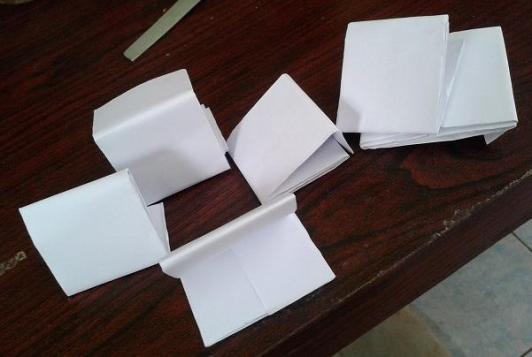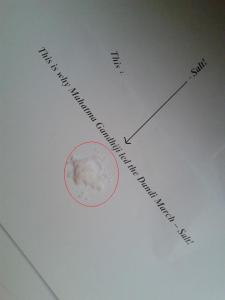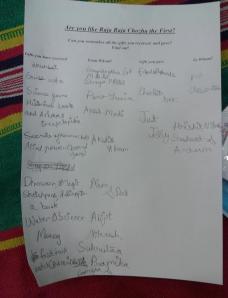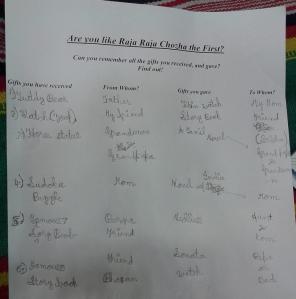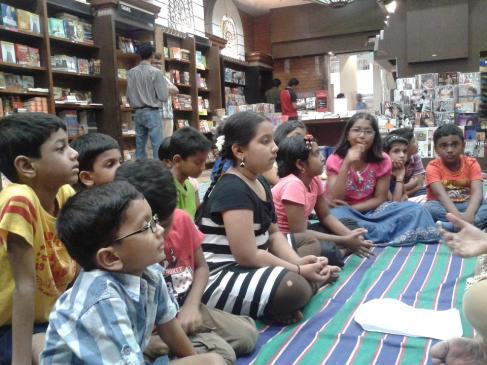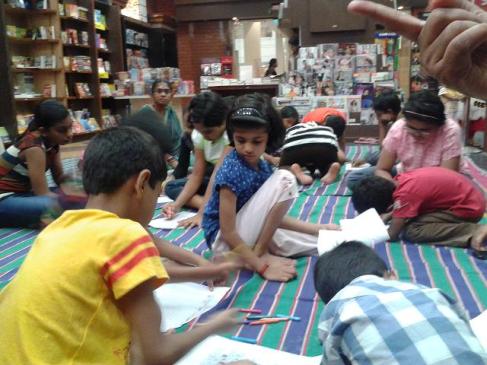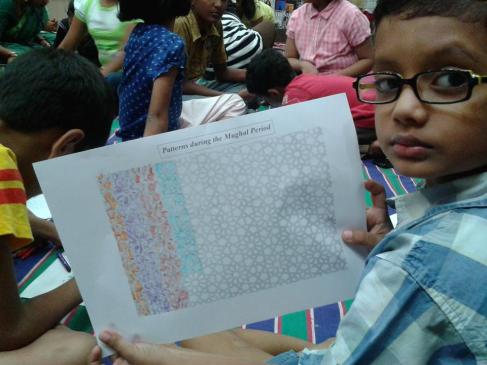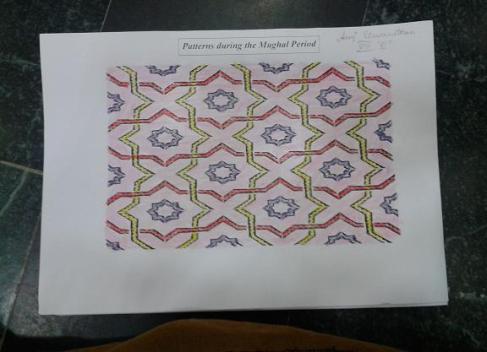GoldSpear
12 Nov 2015 Leave a comment
“In which we meet a “shteady” man.” Source: GoldSpear #OrganicFarming
Sometimes …
05 Oct 2013 Leave a comment
… I look at modern Indian writing. I look at wonderful short-stories and novellas and novels and verses that don’t fit anything and I wonder, God, the people who wrote these must be geniuses. (Or is it genii?) They write so much about depressed spaces, and how language moves past the barriers of silence and stuff like people standing on the side of the road and watching a crab cross the road or someone doing a biryani and about how that defines the fabric of life. Silent embers that glow across the lattices of light. Or something.
And I get more and more depressed.
This is the kind of stuff that always wins competitions, right? Writers like these are the ones that always get the prizes, the accolades, the “voice of the new generation” or whatever.
Meanwhile, I like to write about happy endings. About how people get over their problems and live to see another day and all that stuff. Guess that doesn’t really matter, though.
Quirky Snapshots – 1
04 Oct 2013 Leave a comment
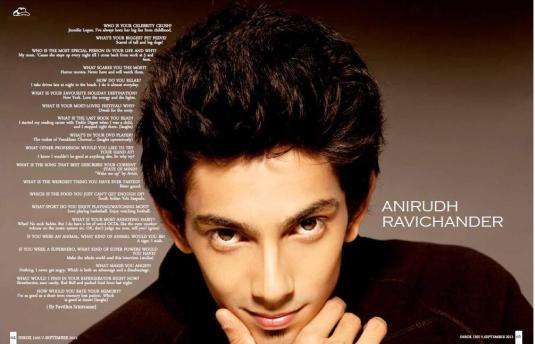
Did this last month, for Inbox 1305. Anirudh is fun.
“Salt, Raja Raja I, and more!” – History Storytelling Workshop IV
29 Sep 2013 Leave a comment
in Children, Fiction, History Tags: Back to the BCs, Gandhiji, History, Landmark, Pavithra Srinivasan, Raja Raja Chozha, Web Miller, Workshops
Not that anyone knew anything about Raja Raja Chozha the First, of course. Well, not right away, and I tried to enlighten them. That’s the whole point of a Historical Storytelling workshop, after all. But before that came another story.
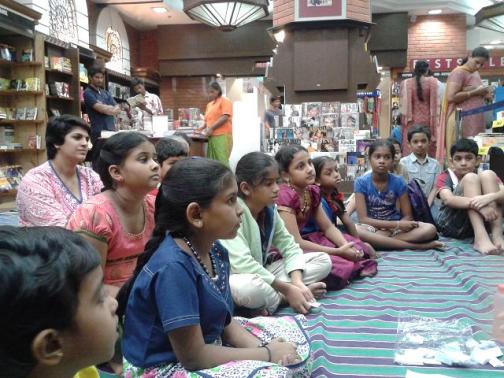 Once the kids (and parents assembled ), we began with a story that has connections to an important event next week. October 2nd, in fact. My story had to do with a certain American journalist called Web Miller, who had a terrible time getting to a tiny village in India, to witness an event that would change the whole of the Freedom Movement.
Once the kids (and parents assembled ), we began with a story that has connections to an important event next week. October 2nd, in fact. My story had to do with a certain American journalist called Web Miller, who had a terrible time getting to a tiny village in India, to witness an event that would change the whole of the Freedom Movement.
The Salt Satyagraha.
But before the story proper, I distributed a tiny packet to each of the kids.
They were pretty curious – but I told them not to open them, and they had enough self-control not to.
As we went through the whole story, most of the kids listened pretty intently. And yet – I noticed something: they knew key characters like Gandhiji and Sarojini Naidu. They even remembered the Salt Satyagraha – or something that seemed vaguely familiar. But there was a problem, They knew the names. They knew the terms. They even remembered the significance of October 2.
But no one knew what exactly the Salt Satyagraha was!
I sort of sensed the disconnect, as the story went along. They managed to stick with it until the end, but when the story was done, the reaction was more of polite interest. The story was ok – but the History part didn’t engage them.
And then, I asked them if they still had the little paper packets I’d given them at the beginning of the session. Everyone did.
“Now, open them,” I said. “Slowly.”
The paper was folded well, and to their credit, they opened them very carefully. There were some words written in it.
Inside – was a little pinch of salt. With something written on the paper.
And then, suddenly – a light bulb went off.
I could almost sense the way they put everything together – the pinch of salt in the paper, with the text – and realization came to them. That’s when the questions started.
“But this is salt!” – “I remember seeing a picture of Gandhiji picking up something from the ground!” – “This is why Gandhiji did a satyagraha?”
And then, the question I’d wanted to hear: “Wait – why did the British not want Indians to make salt?” asked Jas, eyes burning with eagerness.
Hurray. Thus began a mini-History session in which I managed to introduce (in an abridged way) the concept of British monopoly on salt, Gandhiji’s breaking of the salt laws, his march, why people followed him, why they engaged in Civil Disobedience (“Why did they not hit back when the police beat them?!” – a puzzled Jas), and the whole concept of how much more fortunate we are today. All because of a pinch of salt.
(Jas derived considerable satisfaction in knowing that even despite not hitting the British police back during the Salt March, we still managed to get our freedom. “We won, no?” he asked, again and again. “We won in the end, no?” Yes, Jas, we did.)
There were other, hilarious interludes as well, when someone said, “Poor Gandhiji, after all that trouble, Chetan Bhagat shot him!”
Horrified pause. “What?” I asked bleakly.
“Sorry – I meant to say Bhagat Singh,” amended the kid.
Another pause and then we tried to explain that Bhagat Singh was someone else altogether and he certainly hadn’t shot the Father of our Nation.
“So who shot him then?” the kid asked, interested.
Regretfully, I had to tell her that that was another long story, meant for another time, because it was time to know about a certain great king of kings.
“Why’s he called Raja Raja Chozha?” asked Jas the ever-inquisitive. “Why not just Raja Chozha?”
“Because he’s the King of Kings,” I explained.
And then we swept on to a 1000 years ago – which was something of a bizarre concept to them, because the kids didn’t know much about who ruled South India before the British. “The Vijaya Nagara Empire?” one girl offered, which was quite a feat.
Explanations followed, about Thanjavur, the Big Temple, and the numerous donations and wealth that poured in, and what made Raja Raja I truly great: that he’d held himself accountable for every last gold trinket, and inscribed it on the temple walls – perhaps the only king to have done so, in his time.
Then, came the activity: each kid had to write down all the gifts they’d given, and all the gifts they’d ever received. As many as they could. And did they have a tough time of it.
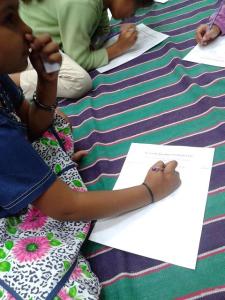 Several had to be coaxed into remembering what exactly they’d gotten – and most seemed to have received a lot more than they’d given. One little girl, Sreshta made a clean breast of it. “I never call anyone for their birthday or give gifts.” After a pause, she explained herself even more. “My parents do all that.”
Several had to be coaxed into remembering what exactly they’d gotten – and most seemed to have received a lot more than they’d given. One little girl, Sreshta made a clean breast of it. “I never call anyone for their birthday or give gifts.” After a pause, she explained herself even more. “My parents do all that.”
But the point of the exercise was driven home: they had to work really hard at dredging their memories. While Raja Raja I had recorded every last measure of grain.
Still, they managed to write what they could. Especially Jas, who needed more than one sheet:
Not quite sure who gave him a super model though.
Someone else had received “Tuddy Bears.”
They did like the workshop. “I liked the stories,” said one self-possessed young lady, whom I’d dubbed nail-polish girl, because she’d written that she got bottles of nail-polish as a gift.
It was left to Jas to finish up, though. “Amazing!” he grinned.
A Date with History
22 Sep 2013 1 Comment
in Children, Fiction, History Tags: Back to the BCs, History, Landmark, Pavithra Srinivasan, Workshops
Her name was Niveditha.
She was the first to arrive at the session last evening, at Landmark Citicentre, Mylapore. She’d come with her parents quite early in fact, almost 15 minutes before the session was due to start. Her parents were polite, soft-spoken, waiting patiently, aware that they’d arrived early, but nervous about sitting down on the colourful jamakkalams the store had spread on the floor, or the workshop. She wore jeans and cotton top, her eyes rather nervous behind glasses, and was looking through the books in the case. The mother guessed that I was connected with the workshop somehow, and in one of those comical instances, we began to speak at the same time.
“Are you here for the workshop?” – “Are you here for the workshop?”
Then we grinned – and the connection was established. Turns out mum was here for the workshop. Well, for the sake of her daughter, anyway. Apparently, Niveditha hated History.
I’ve always known on a sub-conscious level that most people hate History (mostly without rhyme or reason), but it’s a still a bit bizarre to have kids actually say that to your face.
“Why don’t you like History?”
“It’s boring.”
“Why?”
“You have to mug up so many things.”
“Well, what do you like, then?” I asked.
“Maths.”
“And you don’t have to mug up anything?”
“No. I like Maths. Maths is interesting.”
And that seemed that. To give her credit, Niveditha seemed apologetic – she was quite sure she wouldn’t like the workshop – even if it was stories. Ans she wasn’t one who spent much time talking her point either.
“By the end of this session, I hope you’ll see that History can be fun, too.”
She shrugged, clearly full of disbelief. And then she went back to her browsing.
Twenty minutes later, the area was teeming with 15 or so children, and there were even some as young as 3 and 5 years – the younger siblings of the older kids who’d come for the workshop. Their parents told them very strenuously that they couldn’t be a part of it, which made them shriek even more. Of course they wanted to listen to stories!
Yesterday, we planned on two stories: Emperor’s Day Out, which is based on Akbar, and Dibya Charu – the story of Odissa’s first great literary epics, the Dandi Ramayana or Jagamohan Ramayana. He’s credited with shaping Orissa’s literature. It took some time for the Akbar story to come to an end, as kids were still settling in – but I noticed that Niveditha sat quite quietly, and she listened intently to what was being said. And when the final twist came, her mouth formed a little ‘O’ of surprise.
By this time, we’d swelled to around 25 kids, and more wandered in, from time to time. Shoppers came trooping in, hanging over the rails, watching us with dropped jaws. Some took pictures.
Then came the activities. I’d put together a set of simple Mughal designs, indicative of the architectural patterns of that period, and we gave them the sheers to colour, with a bowl of crayons. Everyone had fun with that, even the little kids (who always copy what the big kids do).
There was one kid, especially – looked tiny and delicate, like a stiff wind would push him down. One of those quiet ones who are happy doing something. He’d been colouring patiently for quite a while, and I looked over. His paper was a thing of beauty. Delicately coloured, well-filled in – and markedly different from the others. The kid had style.
Several other designs were well-coloured too – there were some favourites and some kids were so enamoured with the idea that they stayed back after the workshop, finished their piece, and then left.
By the time all this was done, all the parents had returned from their respective shopping expeditions (one of the advantages of having workshops in a mall), and had spread themselves out on the floor, listening intently. Our audience now comprised of both children and adults (some took pictures, others watched their kids eagerly to see what they doing; one or two were consumed with pride.)
We were done around 6.20 pm. I’d designed a fact-sheet as well – I usually put together details about the story’s Historical Figure – it makes a perfect takeaway. I watched Niveditha walk away, clutching her fact-sheet and her drawing, like a prize, towards her parents.
“Did you like them?” I asked. “The stories?”
Her face brightened, like someone had switched a light on. “Yes!” She nodded, smiled wide, and then skipped away.
Mission Accomplished.
(Yeah, that sounds cheesy – but it’s true. Every word of it. 🙂
